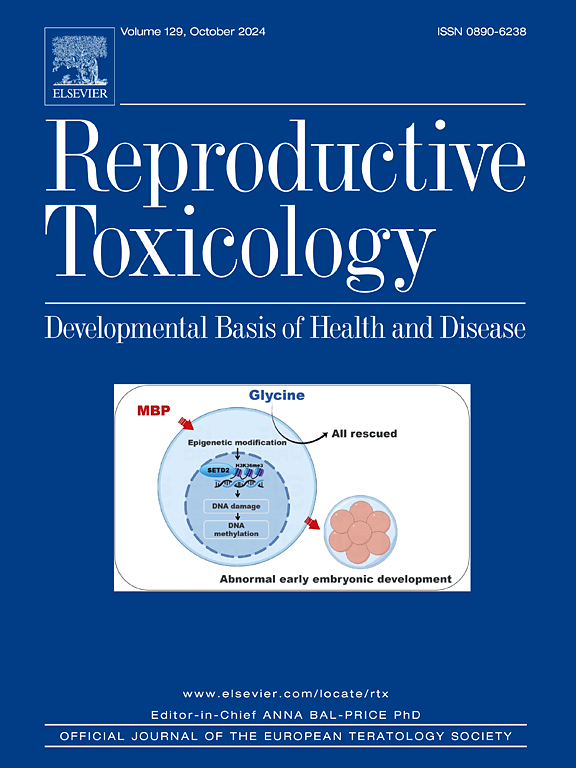氧化应激:卵母细胞质量与不孕
IF 2.8
4区 医学
Q2 REPRODUCTIVE BIOLOGY
引用次数: 0
摘要
不孕不育影响着全世界相当大比例的夫妇,其中女性生殖功能障碍占近一半。氧化应激(Oxidative Stress, OS)以活性氧(Reactive Oxygen Species, ROS)的产生和抗氧化防御之间的失衡为特征,是影响卵母细胞质量和女性生育能力的重要因素。本文综述了体内和体外OS的起源,强调线粒体和颗粒细胞是主要来源,并探讨了卵巢衰老、肥胖、高氧培养条件和环境暴露(如香烟烟雾、内分泌干扰化学物质和控制卵巢刺激药物)的影响。这项工作进一步探讨了OS如何通过线粒体功能障碍、卵泡闭锁、减数分裂错误、DNA损伤、端粒缩短和受精率降低等机制对卵母细胞质量产生不利影响。此外,本文还探讨了与OS相关的生殖疾病,包括多囊卵巢综合征、子宫内膜异位症、卵巢早衰和流产。还讨论了抗逆转录病毒治疗中OS的影响,强调了在临床和环境背景下减轻氧化损伤的策略的必要性。这篇综述强调了OS在女性生殖健康中的重要性,为潜在的治疗干预措施铺平了道路,以提高生育结果。本文章由计算机程序翻译,如有差异,请以英文原文为准。
Oxidative stress: Oocyte quality and infertility
Infertility affects a significant proportion of couples worldwide, with female reproductive dysfunction contributing to nearly half of these cases. Oxidative Stress (OS), characterized by an imbalance between Reactive Oxygen Species (ROS) production and antioxidant defenses, has emerged as a critical factor influencing oocyte quality and female fertility. This review examines the origins of OS both in vivo and in vitro, highlighting mitochondria and granulosa cells as primary sources, and explores the impact of ovarian aging, obesity, hyperoxic culture conditions, and environmental exposures such as cigarette smoke, endocrine-disrupting chemicals, and controlled ovarian stimulation drugs. This work further explores how OS adversely affects oocyte quality through mechanisms including mitochondrial dysfunction, follicular atresia, meiotic errors, DNA damage, telomere shortening, and reduced fertilization rates. Additionally, this review explores reproductive disorders associated with OS, including polycystic ovary syndrome, endometriosis, premature ovarian insufficiency, and miscarriage. The implications of OS in ART are also addressed, emphasizing the need for strategies to mitigate oxidative damage in both clinical and environmental contexts. This review underscores the significance of OS in female reproductive health, paving the way for potential therapeutic interventions to enhance fertility outcomes.
求助全文
通过发布文献求助,成功后即可免费获取论文全文。
去求助
来源期刊

Reproductive toxicology
生物-毒理学
CiteScore
6.50
自引率
3.00%
发文量
131
审稿时长
45 days
期刊介绍:
Drawing from a large number of disciplines, Reproductive Toxicology publishes timely, original research on the influence of chemical and physical agents on reproduction. Written by and for obstetricians, pediatricians, embryologists, teratologists, geneticists, toxicologists, andrologists, and others interested in detecting potential reproductive hazards, the journal is a forum for communication among researchers and practitioners. Articles focus on the application of in vitro, animal and clinical research to the practice of clinical medicine.
All aspects of reproduction are within the scope of Reproductive Toxicology, including the formation and maturation of male and female gametes, sexual function, the events surrounding the fusion of gametes and the development of the fertilized ovum, nourishment and transport of the conceptus within the genital tract, implantation, embryogenesis, intrauterine growth, placentation and placental function, parturition, lactation and neonatal survival. Adverse reproductive effects in males will be considered as significant as adverse effects occurring in females. To provide a balanced presentation of approaches, equal emphasis will be given to clinical and animal or in vitro work. Typical end points that will be studied by contributors include infertility, sexual dysfunction, spontaneous abortion, malformations, abnormal histogenesis, stillbirth, intrauterine growth retardation, prematurity, behavioral abnormalities, and perinatal mortality.
 求助内容:
求助内容: 应助结果提醒方式:
应助结果提醒方式:


